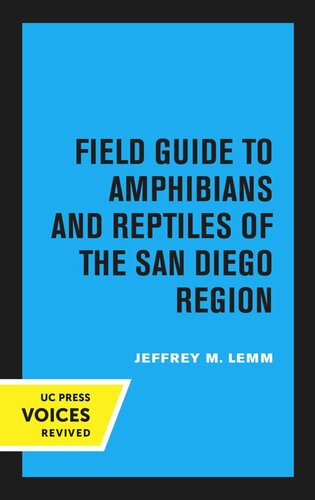

Most ebook files are in PDF format, so you can easily read them using various software such as Foxit Reader or directly on the Google Chrome browser.
Some ebook files are released by publishers in other formats such as .awz, .mobi, .epub, .fb2, etc. You may need to install specific software to read these formats on mobile/PC, such as Calibre.
Please read the tutorial at this link: https://ebookbell.com/faq
We offer FREE conversion to the popular formats you request; however, this may take some time. Therefore, right after payment, please email us, and we will try to provide the service as quickly as possible.
For some exceptional file formats or broken links (if any), please refrain from opening any disputes. Instead, email us first, and we will try to assist within a maximum of 6 hours.
EbookBell Team

4.1
50 reviewsWith its varied topography of coast, mountains, and desert, the San Diego region, considered one of the world’s biodiversity hotspots, boasts a rich variety of amphibians and reptiles—from the arboreal salamander to the green sea turtle to the secretive San Diego banded gecko and the red diamond rattlesnake. More than a field guide, this up-to-date, authoritative, conservation-oriented book is the first comprehensive resource on the herpetofauna of the region, which is unfortunately also known for its high number of endangered species. Jeffrey M. Lemm gives information on identification, habitats, biology, and the conservation status of all 88 amphibian and reptile species found in the San Diego region. Many of these animals can also be found in a wide area of Southern California and Northern Baja California, making this valuable guide useful for a wide geographic area and a must-have for outdoor enthusiasts, nature-lovers, and professionals alike. * Includes a special venom section written by Sean Bush of Animal Planet’s “Venom ER” * 160 color photographs illustrate the major habitats and all 88 amphibians and reptiles found in the region * 70 range maps pinpoint the locations of each subspecies * A new, easy-to-use taxonomic key by renowned herpetologist Jay Savage as well as line drawings of tadpoles and amphibian egg masses help make species identification simple